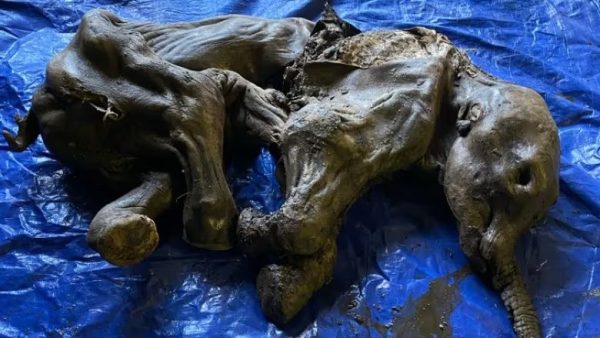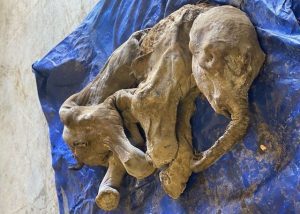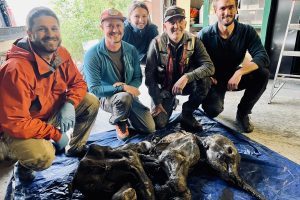In the heart of Yukon’s ancient grounds, a remarkable tale unfolds, revealing the discovery of Nun cho ga, a baby woolly mammoth, whose exquisitely preserved remains have captivated the world.

Unearthed near Dawson City by a miner, this rare specimen, estimated to be around 30,000 to 35,000 years old, has ignited not only scientific curiosity but also a profound cultural and spiritual connection for the Tr’ondëk Hwëch’in First Nation.
Since its discovery, Nun cho ga has been stored in a walk-in freezer in Dawson City, carefully preserved for further exploration. Now, an ambitious long-term strategy is underway to unveil the mysteries hidden within its ancient frame.

The Tr’ondëk Hwëch’in heritage director, Debbie Nagano, expressed the community’s commitment to preserving and respecting the mammoth. A pivotal step in this preservation journey involves sending Nun cho ga to the Canadian Conservation Institute in Ottawa, renowned for its expertise in heritage preservation.
The Tr’ondëk Hwëch’in, stewards of the land where the mammoth was found, are taking a leading role in determining the fate of this extraordinary specimen. The Canadian Conservation Institute, a federal agency specializing in heritage preservation, will play a crucial role in this endeavor.

The institute has become a beacon for Nun cho ga, where it will undergo conservation treatment to unlock the secrets held within its ancient tissues.
Grant Zazula, a Yukon government paleontologist, emphasizes the scientific significance of Nun cho ga. This specimen, the first whole baby mammoth found in North America and the second globally, provides a unique opportunity to answer questions about mammoth existence, their environment, and the circumstances of their disappearance. X-rays and CT scans are poised to reveal details about Nun cho ga’s life, death, and potentially its gender.

Yet, Nun cho ga is more than a scientific marvel. Zazula speaks of a deep emotional and spiritual impact on those who have encountered this ancient being.
The mammoth has become a symbol of unity, bringing together diverse communities—the Tr’ondëk Hwëch’in, the Yukon government, scientists, and gold miners. Its discovery is seen as a gift, an opportunity to bridge science and Indigenous traditional knowledge.

As Nun cho ga embarks on a journey to Ottawa, the Tr’ondëk Hwëch’in community is grappling with profound questions about storytelling, teaching, and cultural preservation.
The mammoth, named “big animal baby” in the Hän language, carries not only scientific knowledge but also cultural and spiritual significance. A community meeting in Dawson City has already begun the dialogue on how to integrate Nun cho ga’s story into their teachings.





